Getting Started with Solids
It’s time to enter the exploratory phase of eating real food – hollerrrr! (In the baby world we call this Starting Solids. It’s a milestone.😉) If you’ve ever had your jaw wired shut, you understand JUST how boring a liquid-only diet can be. This is an exciting new chapter.
Remember, there aren’t any rules for starting solids (ok, well, just a few). The goal this month is for baby to explore new flavors, textures, and smells. We’re also getting used to sitting in a high chair and getting acquainted with bowls, bibs, and spoons (or, if you’re going the non-puree route, just a bib).
Don’t expect your baby to get any significant calories from food during the first month or so. At this point, you are simply augmenting his or her normal milk intake with some food. That’s all. Normal intake of breastmilk or formula should still be providing the majority of baby’s nutrition throughout the first year.
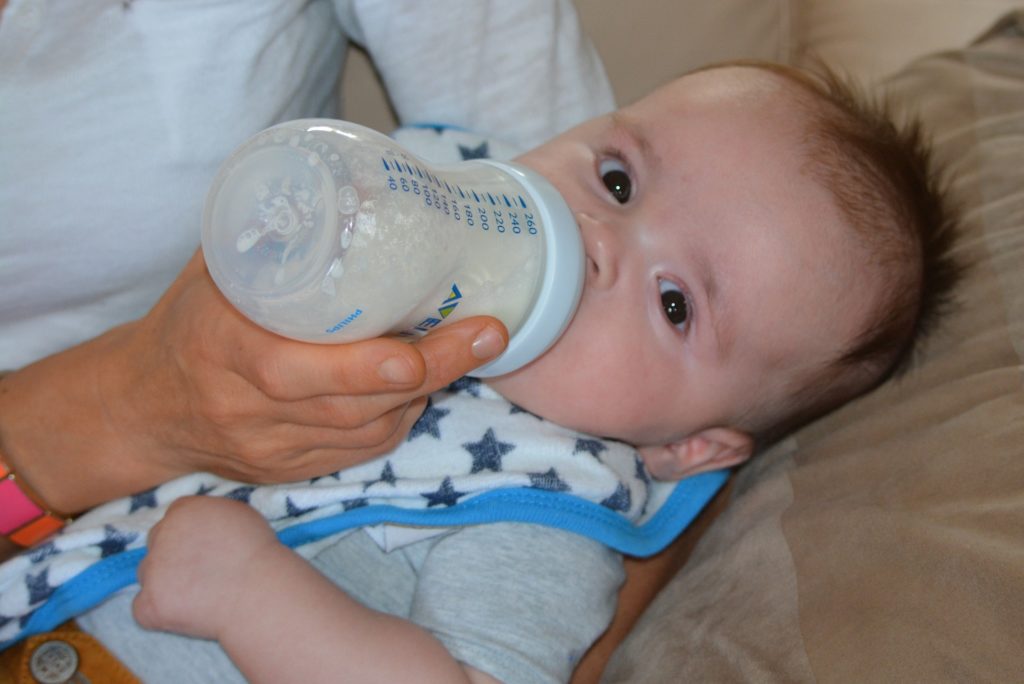
Speaking of which, what is “normal” right now?
Milk/Formula Intake at 6 Months
At 6 months of age, the average baby drinks about 24-32 oz of milk or formula per day, give or take. Breastfed babies tend to drink less than formula-fed babies (up to 50% less, in fact), so if your breastfed baby is drinking far less than a friend’s formula-fed baby, don’t panic; breastmilk is metabolized more efficiently, so less of it is required.
“Let your baby set the pace, but if he continues to consistently take more than 32 ounces or less than 20 ounces, run it by your pediatrician.”
Dr. Alan Greene
Starting Out with Starting Solids
Your baby’s first taste of food should be a fun event. Get your camera out so you can memorialize the occasion.
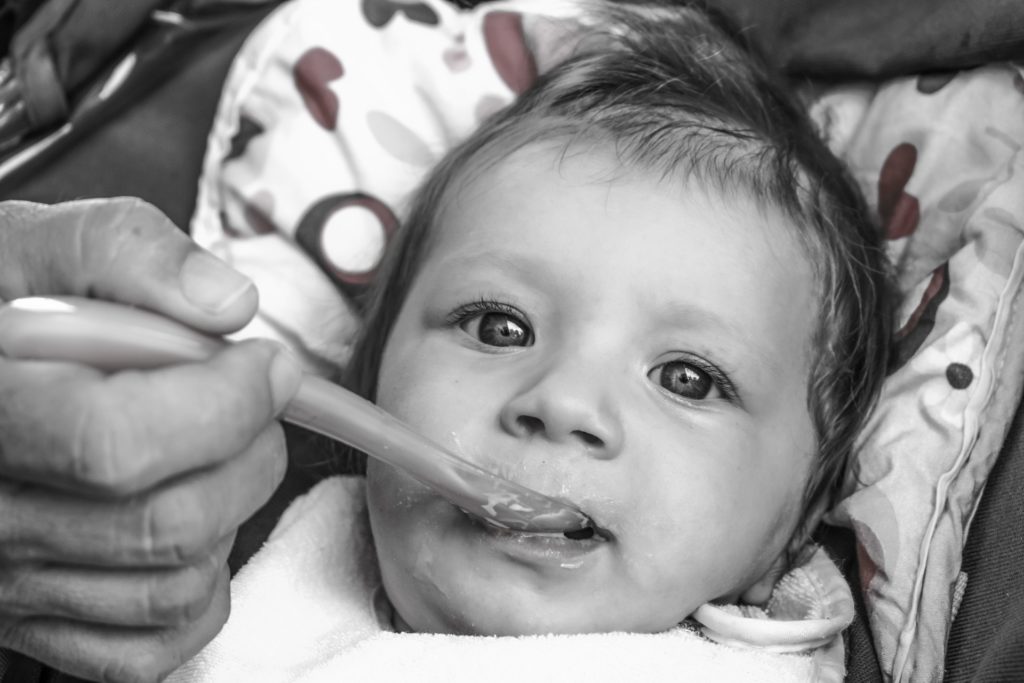
Choose a date and time when your baby is well rested and you are feeling sane as well; weekends are a good time to start so everyone can be there, but again, it sooo doesn’t matter. Do it whenever you’re feeling motivated. Start about an hour or more after a normal milk/formula feed so that he’s a little hungry, but not so hungry he’s eating his arm.
We’re just aiming for a couple of spoonfuls here, folks, so keep your expectations low. If he’s totally not into it and you’re forcing it, I suggest you scrub the mission and try again in another week. The last thing you want is for this to turn into a stress-inducing endeavor.
For the first week or two, just feed him once a day or so until you get your routine down — more frequently is totally fine too if you’re up for it. (Starting solids is a process, not an event!)
Introducing New Foods
The old-school approach to starting solids is to offer the same food (and only that food) for 3-4 days in a row before introducing a new one. The aim with this was to easily identify food allergies and sensitivities, but new research shows that this approach is unnecessarily conservative. Plus, these early foods are not ones that babies are likely to be allergic to anyway.
Studies have shown, however, that babies learn to like new flavors more quickly when they are introduced in rapid succession. Think of speed dating, but with baby food. This also allows you to offer more foods if one or more foods are rejected (as they will be!). Bottom line: There’s no need to have a waiting period before offering new foods.
Repeated Exposure is Critical
As a general rule of thumb, babies will readily accept sweet foods, like fruits, without any prodding. On the other hand, some vegetables, especially the bitter ones, will require repeated exposure before baby will accept them. Sometimes, up to 10 times! (Actually, 10 is sort of a magic number when it comes to trying foods enough to like them.) This might seem unusual, but it’s actually how we evolved to learn what’s safe to eat.
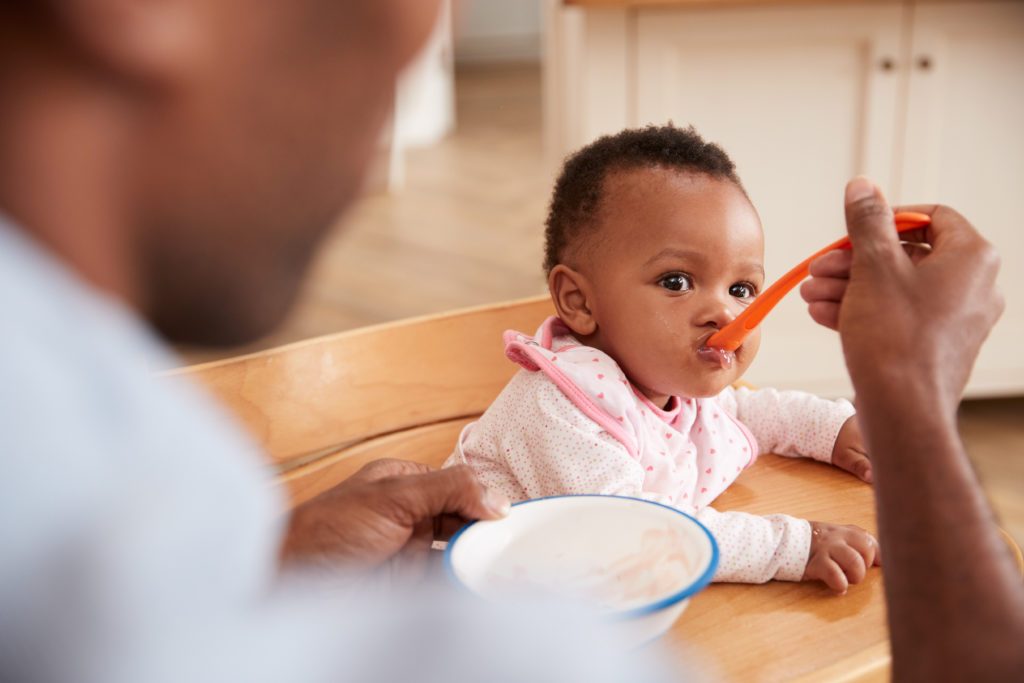
It goes like this: you feed him broccoli, he spits it out, you feed him broccoli, he spits it out… rinse and repeat eight more times until finally he says, “Broccoli, YUM! Gimme some more.” Bingo, he’s now in the broccoli club. This is totally normal, so don’t give up! Most people don’t know this (after all, it’s not exactly intuitive), so they quit vegetables forever and get stuck in a rut of feeding only starches and sweets. (Side note: adults can learn to like foods, too, and the same “rules” apply — repeated exposure (~10-12x) = likeability.)
Again, once babies hit toddlerhood, neophobia sets in and they become less and less keen on trying new foods, so take advantage of the next 6-10 months to expand their palates as much as possible. The more foods your child is willing to eat (or try), the easier your life is going to be. (Point being: You know you’re really on the right track when taking your toddler out for sushi — raw fish and all — is fair game. Win-win-win.)
Starting Solids: Le Menu
There are a few different paths you can take to kick things off: the cereal route, the baby food route, or the BLW (baby-led weaning) route.
A note about the 2021 findings on heavy metals in baby food:
In early February 2021, the report of a Congressional investigation into baby food manufacturing revealed that numerous name brand infant foods (Gerber, Happy Baby, Beech-Nut, Earth’s Best…) contained high levels of toxic metals (namely, lead, mercury, cadmium and arsenic).
Rightly so, the media has been covering the situation with some alarm. All of us are exposed to these metals in some form or another — the real worry lies in the potential adverse effects of additive concentration of any of them over time.
Based on the outcomes documented, arsenic appears to be the worst culprit. Studies have shown that children who live in places with high levels of arsenic in the drinking water score lower on IQ assessments. This is obviously scary — but you don’t need to totally freak out yet. As Emily Oster explains in great detail in her blog post on this very topic, the arsenic levels documented in baby foods are lower than those in these studies; and they seem to be highest in foods like rice puffs and rice cakes. Even so, the overall exposure for any given child is likely low, Oster says. If you have concerns, definitely check out her full piece (which sites and links to the actual data). She suggests, if anything, cutting back on rice-based products.
Frankly, this really shows how much more oversight we need in the world of food manufacturing — especially when it comes to babies and children.
Baby “Cereal”
Over the last 35 years or so, iron-fortified rice cereal has become the de facto “first food” recommended for most American babies, mainly because it’s non-allergenic and easily digestible. Ask any older pediatrician, read any book on starting solids, ask most moms, “What is the food my baby should eat first?” and the answer is inevitably: “rice cereal, mixed with some breast milk or formula.” Blah. Unfortunately, it’s become ingrained in our baby-feeding culture.
A laugh:
When we were given the go-ahead to start solids for Lucie, our sweet, Santa-like 70-something-year-old pediatrician said to start her on rice cereal. Sweet! So I loaded her into the stroller, headed down to the grocery store and bought a huge box of (don’t laugh…) Rice Krispies. JEAH. [How was I supposed to know?]
I ran into a mommy friend on my walk home and told her of our impending adventure. “No, noooooo, not Rice Krispies!” she said, trying to stifle her laughter, “you have to get the special baby rice cereal, it’s all… ground up and stuff.” I was all, “Yahhhh, I knew that. Tssss. I was just… heading home to make Rice Krispie treats” [and you’re taking advice from me?? This is scary. Just sayin ;-)].
When considering baby cereal, know this: there’s been debate about white rice cereal.
Here’s the deal: white rice cereal is neither rice nor cereal; it’s actually highly processed white rice flour with some vitamins and minerals added back in. White rice flour is extremely high-glycemic. In fact, the conversion of white rice flour to glucose begins while the cereal is still in the baby’s mouth — and the “cereal” is nearly 100% glucose (sugar) by the time it is absorbed in the intestines. And although most baby cereals have added iron, the iron is very poorly absorbed. Only about 7% of the iron intake is incorporated into red blood cells.
Pediatrician Dr. Alan Greene, author of Feeding Baby Green, likens it to feeding your baby spoonfuls of white sugar.
Ok, so what? Who doesn’t love sugar?
Keep in mind that the imprinting of early tastes is very strong and will influence what a baby will come to accept later in childhood and adulthood. Exposure to a certain food earlier in infancy (5 or 6 months) has a MUCH stronger effect than exposure at a later age (10 months, for example). By offering rice cereal as a child’s first food (which then inevitably becomes a staple of the first-year diet, trust me on this one), you may be setting the stage for high-glycemic, refined carbohydrates to become the mainstay of your kiddo’s diet.
Think about it: if all you had ever eaten in your life was ice cream… and then someone introduced you to broccoli, do you think it would work? At best, it would be an uphill battle. While nobody knows for sure if the use of white rice cereal is a culprit in the obesity epidemic, it seems logical that it probably doesn’t help, especially if you have a family history of diabetes and/or obesity.
In conclusion (ahem), if you really want to go the cereal route for starting solids, consider choosing a whole grain rice – or even oatmeal cereal. The whole grain cereals are usually found riiiight next to the white rice version (and believe me, one box of this stuff will last a freaking eternity, so don’t go out buying a 36-pack from Costco, k? You could feed an army of babies). (For a little more on the whole cereal situation, read this Q&A).
Our recommendations: Earth’s Best Multi-Grain or Oatmeal Cereal; or Ready, Set Food’s new organic whole grain oatmeal that also includes nine of the top allergenic foods (see also: how & why to introduce allergens early).
Administering Cereal
If you choose to begin starting solids with baby cereal (of any kind), you will simply mix the cereal with breast milk or formula in a small bowl and spoon-feed in very small spoonfuls to start. You may need to play with the consistency and temperature to find a sweet spot. Don’t be surprised if the first few spoonfuls are… refunded, if you will. It takes a while for a baby to get used to the concept of mouthing and swallowing non-liquids.
The Constipation Proclamation
Anecdotally, I will also tell you that iron-fortified foods can cause really gnarly constipation in little babes. My friend Lauren cautioned me about this after an emergency trip to the pediatrician where her daughter was treated for anal fissures from constipation. Anal fissures, y’all. I don’t even need to know what that is to know I don’t want it.
Combine iron-fortified stuff with other constipating foods like banana, applesauce, rice, bread, pasta, iron-fortified formula, etc., and you (your baby, rather) may be in a real pickle. All I’m saying is… go easy on the iron supplementation until you can calibrate what your baby can digestively tolerate. Also, please don’t get stuck in the rut where you have to give Miralax to your baby every day because he’s chronically constipated. If you have to do that, something is seriously wrong with his diet. Just sayin’.
Baby Food Purees
Contrary to what most people think, you definitely do not have to start your baby off on cereal (I may have mentioned this already ;-)).
“There is no good reason not to introduce meats, vegetables, and fruits as the first complementary foods.”
Dr. Frank R. Greer, member of the American Academy of Pediatrics Committee on Nutrition
A plain puree of a single root vegetable mixed with your baby’s normal milk/formula is an excellent first food. I recommend sweet potatoes because BABIES LOVE SWEET POTATOES, y’all. They just do.
See also: Making Baby Food
For the first couple of weeks, I suggest introducing some or all of the following foods (again, just for simplicity’s sake; there are MANY others you can feed them as well):
- Sweet potatoes or yams
- Ripe banana
- Squash
- Pear
- Avocado
- Peas
Because they are sweet(ish) like breast milk and formula (but not too sweet), these foods^^ have a very high success rate as first foods. Once your baby decides that eating is cool, we can quickly move on to some more challenging foods.
Starting Solids: Store Bought vs. Homemade
Yes, homemade food offers many advantages over store-bought baby food. First, it’s way cheaper to make your own. In fact, you can make and freeze a large quantity of food for a very small amount of money. Second, if you make it at home, you know exactly what’s going in it – and what’s not. You can also get creative and mix different flavors together for the sake of variety.
Having said all that (ahem), I will be the first to admit that the vast majority of moms will use at least some store-bought baby food simply for convenience. Unless you are the Martha Stewart type, lots of moms are willing to pay a little more for the convenience and the portable packaging (the little glass jar). It happens.
If you are gung ho about making your baby’s food yourself, by all means you should do it. Making your own baby food can be very fun and rewarding (and cheap!). However, if you don’t have the time, then buy it at the market and don’t think twice about it. Your baby will be happy either way. Pinky swear.
Selecting Commercial Baby Food
When shopping for baby food, avoid food with added sugar and modified food starch, which are just empty calories. Organic is always better if you can afford it. If you want to take the middle ground, just buy organic for the “dirty dozen,” which are foods that typically contain the highest levels of pesticides: celery, peaches, strawberries, apples, blueberries, nectarines, bell peppers, spinach, cherries, kale/collard greens, potatoes, and imported grapes. Oh, and you don’t have to worry much about salt because it’s no longer added to commercial baby food.
A longstanding favorite brand of baby food is Earth’s Best, which is organic and widely available. At the Safeway near my house I could get 9 for $10 (and that was in Cost-ifornia, so hopefully yours is cheaper). Not too shabby.
The Best of Both Worlds: Amara
If you purchase directly from Amara’s website, get 15% off plus free shipping on variety packs with the code LUCIESLIST. Eat up, babies!
Baby-Led Weaning
Again, letting baby feed himself from the get-go (or once he’s mastered picking up small objects) is another great option. I suggest you at least try some finger foods to see how he reacts. Some babies will stare at the food on their tray, not knowing what to do with it, while others will start munching their way to happiness and never look back. Yes, BLW can make life much easier!
In general, the same first food ideas apply to BLW, although some of them aren’t practical because they can’t easily be self-administered at this young age. Ideally, you want to cut finger foods into matchstick shapes so baby has a handle to grab (motor skills at this age? Not so good). Foods like broccoli are perfectly shaped because they can easily grab the stalk and eat the floret.
When making finger foods for baby, a steamer is your best friend. You can steam the food as little or as much as you need to achieve the desired softness (trust me: I could turn a carrot into a limp noodle!). You can use your regular steamer pot (or steamer basket) on your stove top, or you can use an electric steamer, like this one.
Remember, you can throw multiple foods into the steamer at the same time – there’s no need to cook them separately. For Alice, I threw all her food for the day in the steamer each morning and did it all at once (below).
Ideas for BLW first foods for month 1:
Vegetables and fruits [cut into matchsticks, then steamed]:
- Sweet potatoes
- Parsnips
- Broccoli
- Cauliflower
- Carrots
- Pumpkin
Ripe fruit, cut into matchstick shapes:
- Banana
- Apple
- Peach
- Nectarine
- Mango
- Slices of avocado (not too soft because it will fall apart)
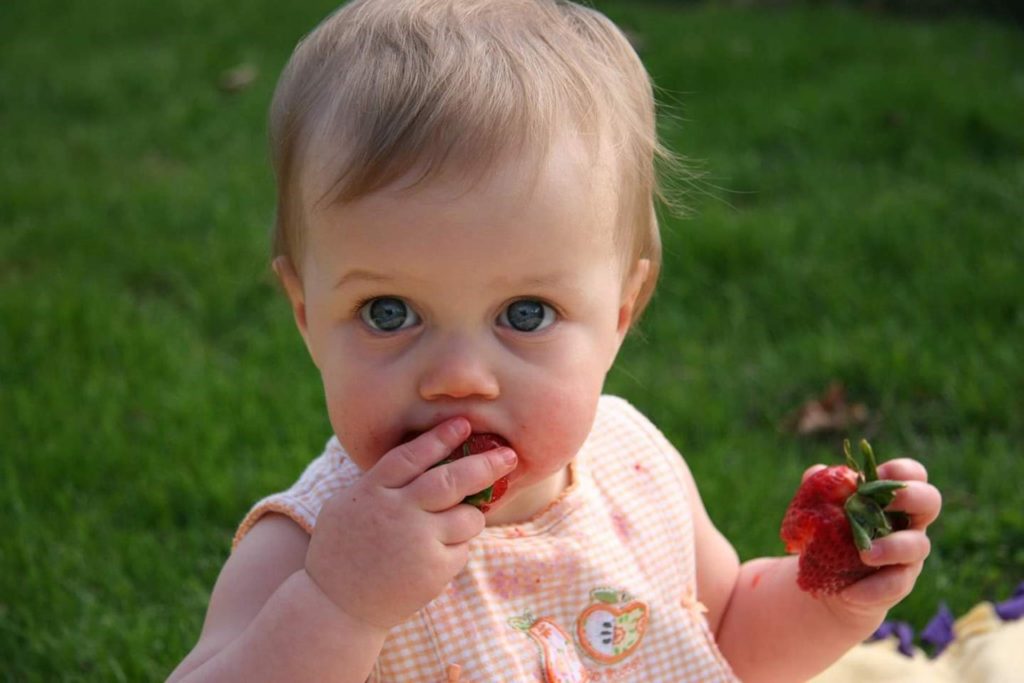
You can cut slippery fruits with a crinkle cutter or even coat them in cereal to make them easier to hold.
Starches:
- Toast or bread “fingers”
- Balls or “fingers” of sticky rice (ahem, VERY sticky) – I suggest using “sushi rice”
- Pasta
Be careful not to let breads, rice, and pastas become the mainstay of your baby’s diet. Trrrust me, it’s easy to do, even with the best intentions.
Bonus tip: large sticks of cold, raw cucumber are great for teething pain. Cold, (whole) raw carrots work well too. (Read more about teething remedies.)
Meat
You can offer strips of chicken or beef that baby can gnaw on (a great source of iron!). Some proponents also suggest baby can even eat (gnaw? suck?) meat right off the bone (it’s very primitive, I love it).
Remember, finger foods don’t have to be made specifically for a baby. Any food you’re eating can be shared, provided it isn’t too high in salt, sugar, or other additives, like MSG. Babies should eat no more than 1 g of salt per day (this is only about ⅕ of a teaspoon, FYI — a tiny amount), as their immature kidneys can’t process it very well. Outside of that, the sky’s the limit!
What About Choking?
Choking is not typically a concern when baby is feeding himself, but do be sure to properly cut up spherical or round-shaped chokey foods, like grapes, plum tomatoes, large carrots, bananas, etc. (Seriously, don’t forget to cut bananas length-wise first. I’ve heard of a lot of babies choking on bananas.) To learn more about what babies really do choke on, click here.
About Iron

We know that about 80% of a newborn’s iron stores are accumulated during the 3rd trimester of pregnancy, so preemies are at a higher risk for iron deficiency. The iron stores for full-term babies, on the other hand, may begin to dwindle sometime between 6 and 9 months — the studies are conflicting.
So do babies need iron supplementation after 6 months of age, as commonly thought? Ask 10 different doctors and you may get 10 different answers.
Some studies indicate that iron supplementation is necessary for breastfed babies, while others show that iron supplementation reduces the amount of iron absorbed from breast milk. While breast milk is not high in iron, the iron from it is extremely well-absorbed. Hence, some studies suggest that iron from breast milk is enough on its own. Formula-fed babies, in theory, are getting plenty of iron from their formula, although it’s poorly absorbed.
So wait, what?
Because the research is so conflicting, concerns about your baby’s iron needs should be directed to your pediatrician. [Translation: I have no idea and I don’t think doctors do either.]
(Although, the official AAP policy for breastfed infants is to recommend iron supplementation at about 4 months, until dietary iron is adequate.)
It’s safe to say that naturally iron-rich foods are always a good idea.
Starting Solids: A Short List of No-Nos
There is a very short list of foods you shouldn’t give your baby prior to the 12-month mark. The starting solids no-no’s are as follows:
- Honey
- Cow’s milk (at least not in large quantities)
- Foods high in salt, sugar, and/or other additives
The Lowdown on Food Allergies
Food allergies are on the rise: The American Academy of Allergy, Asthma, and Immunology (AAAAI) reports that 6 percent of children age 0-2 have a food allergy and 9 percent of children 3-5 years old have a food allergy.
The vast majority of food allergies are triggered by one of “the big eight”: milk, eggs, soy, peanuts, tree nuts, fish, shellfish, and wheat (sesame is the ninth…).
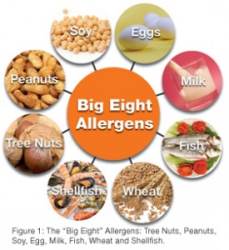
It USED TO BE that pediatricians and allergists would recommend waiting to introduce these foods for 1-3 years, but recent studies have shown that waiting to introduce these foods to babies has NOT been proven to make any difference in preventing allergies to these foods. In fact, the most up-to-date research and professional recommendations show just the opposite: early introduction of the most common “allergy foods” decreases a child’s chances of developing food allergies. Go figure.
You can read our expanded discussion about early introduction of allergens, in case you missed it.
Yes, friends, the new evidence-based advice for starting solids is that waiting to introduce allergenic foods is not only pointless, but also potentially problematic. Plus, you’re missing out on some great foods to give to your baby in the meantime.
A note in closing:
As new parents, we always want to know the absolute “best” way of doing everything, but try not to overthink it. Cuz with Baby #2 (or so?), the Starting Solids Manual looks something like this:
“Feed them whatever, kthanks.”
As my friend Laura says, “Baby #3 is lucky if I even remember to feed her.” Hah! Whichever route you take will be fine, just have fun with it. 😉
Peace!
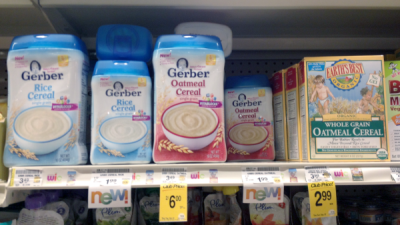
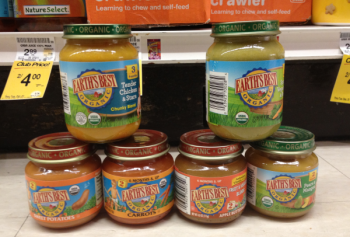
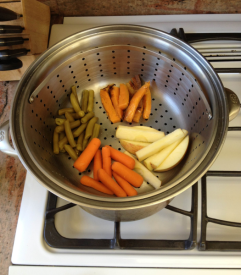
Hi there! I love all of your lists and recommendations 🙂 Wondering if you have any advice on Baby Food makers (the blender and steamer combined). I’m pretty lazy (and have twins!), but want to try making food this time around. I love the idea of pressing some buttons and walking away, but not sure if you have any thoughts on them. My head is spinning from researching the options.
Thanks!
Michelle
Hi, Michelle! We have that on our radar to cover in more depth in the coming months. In the meantime, I love a simple Magic Bullet as an easy stop-gap solution — more to come soon, though!
Hello! We love your list and recommend to everyone 🙂 Did you get a chance to review baby food makers? Trying to decide what to get as we plan to make our own at home. I figure I have been making my dogs food for 12 years…I should probably make my babies 😉
Annie — Hi there! We haven’t been able to yet (it’s on our list!), but you can also use a simple food processor or a magic bullet! Good luck!
Hi! I LOVE your blog! (Post? Site? Whatever)
Do you know anything about Bambas? Those puffy peanut snacks? Our pediatrician recommended that to introduce peanuts to her but I had never heard of them.
Thanks!
Hi Melissa! There are a number of clever products available right now that are intended to introduce nuts early on — if your pediatrician recommended them, I bet Bambas are a great intro.
I have this one and I really like it. https://www.google.com/search?q=baby+food+blender+and+steamer&source=lmns&tbm=shop&bih=743&biw=1375&hl=en&sa=X&ved=2ahUKEwih2r6TlcXzAhXHCDQIHepMCZIQ_AUoAXoECAEQAQ#spd=8583965262227682062
Hi Brit,
Your blog is just what I was looking for as I start exploring how to introduce solids to my baby. Do you have any recipe recommendations for home made purées? Also, you mentioned that feeding a baby the same thing for 3 days is somewhat of an outdated mentality. What do you recommend instead?
Pey — Hi there! Thanks for your comments. When I was making baby food, I liked to keep it pretty simple, but I found myself using this blog for some fun recipes to start out. Hope it helps! As for the “feeding the same foods in repetition” issue — there’s no blanket recommendation. If you’re only just starting out, it can sometimes be helpful to try one food at a time, since baby is still literally learning to eat. But you could mix things up as much or as little as you want. 🙂
I have come back to this article several times to remind myself that I am not out of my mind for avoiding the rice cereal trap. I am an educated health professional that chose to not go for the rice cereal because of the high glycemic index and low nutritional yield. That being said, my MIL is APPALLED that I do not use it. The new mom in me has relished the affirmation from your site to help me stand by my own decisions. Thanks for having an article with a variety of perspectives without judgement
My mom feels the same way! Aghast and like I am starving the babe. I am just trying to ignore her. 😂
Hello Britt, definitely the best of the best articles, I have read too much about foods for babies of 6 months and only this one has really helped me, it is the maximum, I am in Colombia and I am your fan !! Thank you, please post more recipes for babies 6+!
Love you!